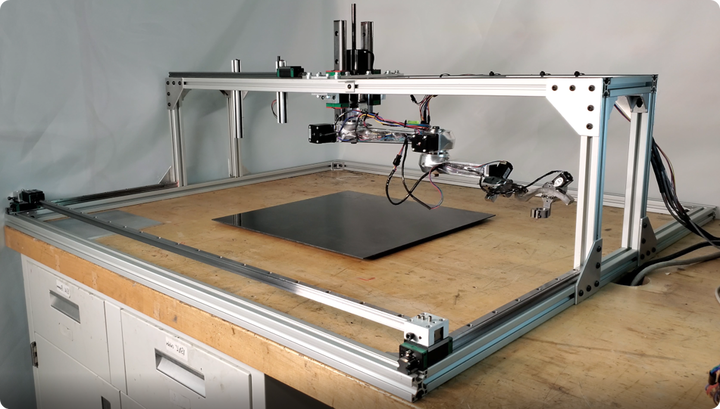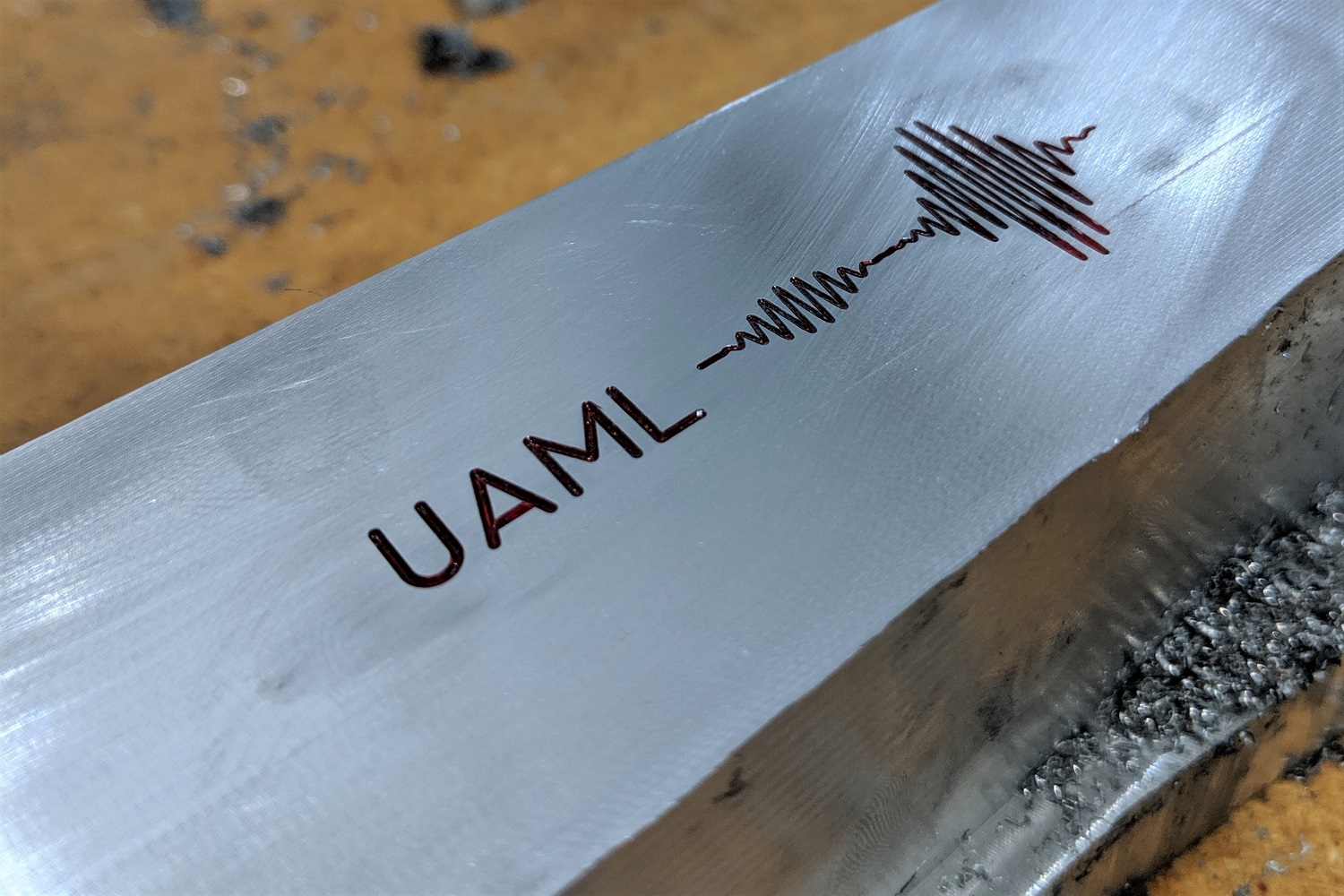Nondestructive testing experiments
 Custom air-coupled transducer positioning system
Custom air-coupled transducer positioning system
Transducer positioning
A custom, in-house, multi-axis positioning system for NDT experiments features an innovative robotic arm with a 2-D goniometric stage for air-coupled ultrasound transducers to efficiently conduct experiments on composite specimens. The system allows for automated, and highly accurate positioning to acquire detailed wave propagation and scattering data. The NDT positioning system’s capabilities are utilized for dispersion and damage detection experiments on quasi-isotropic and anisotropic composite specimens. To this end, a path planning algorithm is implemented to capture guided ultrasonic wave data in different propagation angles with very fine increments.
Transducer design for NDT of complex, additively manufactured parts
Additive manufacturing (AM) has the ability to produce components that are not only geometrically complex, but that are not manufacturable by traditional manufacturing methods. These highly optimized shapes often contain free-form geometry and/or lattice structures, lacking parallel surfaces or other features that typically exist in cast or machined parts. This creates additional challenges for common inspection methods such as visual, conventional X-ray, and ultrasonic techniques. Hence, the objective of this research is to develop an ultrasonic transducer optimized for inspecting complex AM components that cannot be inspected with current commercial ultrasonic methods due to access constraints. The design will be driven by numerical simulations and validated through laboratory experiments.
Ringing suppression
Iterative learning control (ILC) is utilized for generating precise ultrasonic wave pulses for NDT purposes. The premise of ILC is that the performance of a system, which is repetitively executing the same task, can be improved by learning from previous attempts. In order to develop a systematic approach to the design of the L- and Q-filters for the ILC, a previously proposed H-infinity-synthesis method is employed. To this end, a low-order model is fitted to captured frequency response data. Based on this model, appropriate L- and Q-filters are synthesized and the ILC is trained to generate the optimal driving trajectory. It is shown in laboratory experiments that ringing effects, i.e. distortions of the induced wave packets, are significantly reduced by means of this approach.


